Key takeaways
- Carbohydrates, proteins, and fats are essential for optimizing performance in obstacle course racing, each serving specific roles in energy, recovery, and endurance.
- Balanced meals should include complex carbohydrates, lean proteins, healthy fats, and hydrating foods, with attention to meal timing for maximum energy during workouts.
- Hydration strategies must incorporate electrolytes, with consistent sips rather than large quantities of water, to maintain performance and prevent cramps.
- Monitoring dietary responses and refining meal plans throughout the racing season is crucial for sustained energy and overall performance improvement.
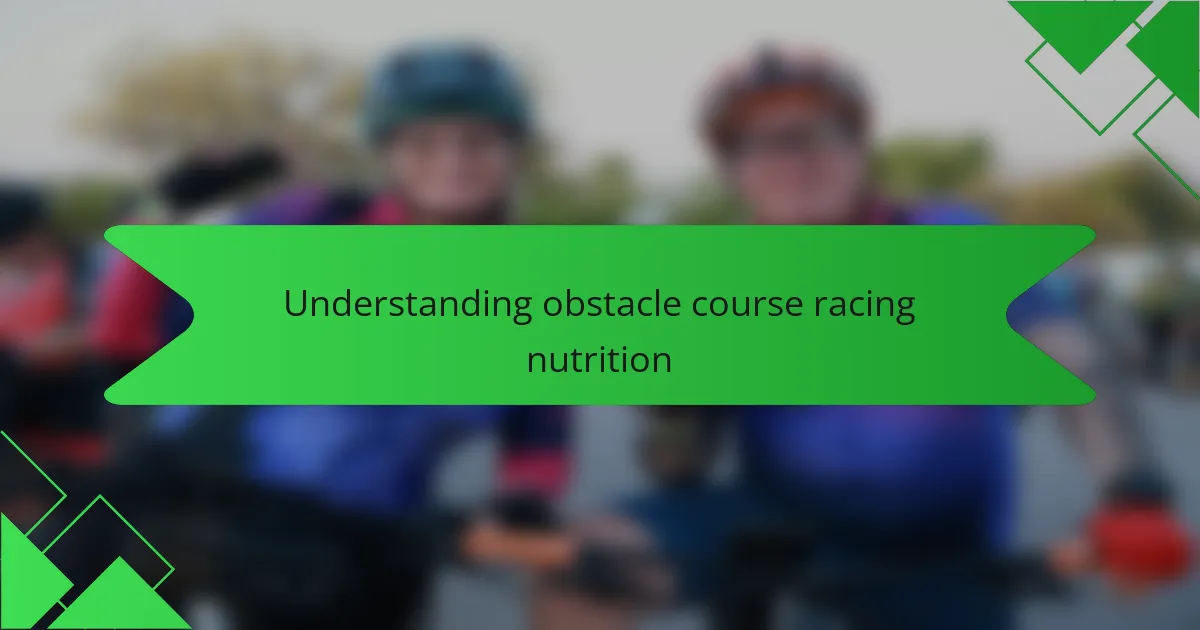
Understanding obstacle course racing nutrition
Understanding obstacle course racing nutrition is key to performing at your best. From my experience, it’s not just about eating enough but choosing the right balance of carbs, proteins, and fats to fuel both endurance and strength. I learned this the hard way when I first underestimated how much energy rebuilding muscles after a race actually took.
| Nutrient | Role in OCR Performance |
|---|---|
| Carbohydrates | Primary energy source, fuels endurance during long and intense courses. |
| Proteins | Crucial for muscle repair and recovery after tough obstacles and training. |
| Fats | Supports sustained energy release and overall cell function. |
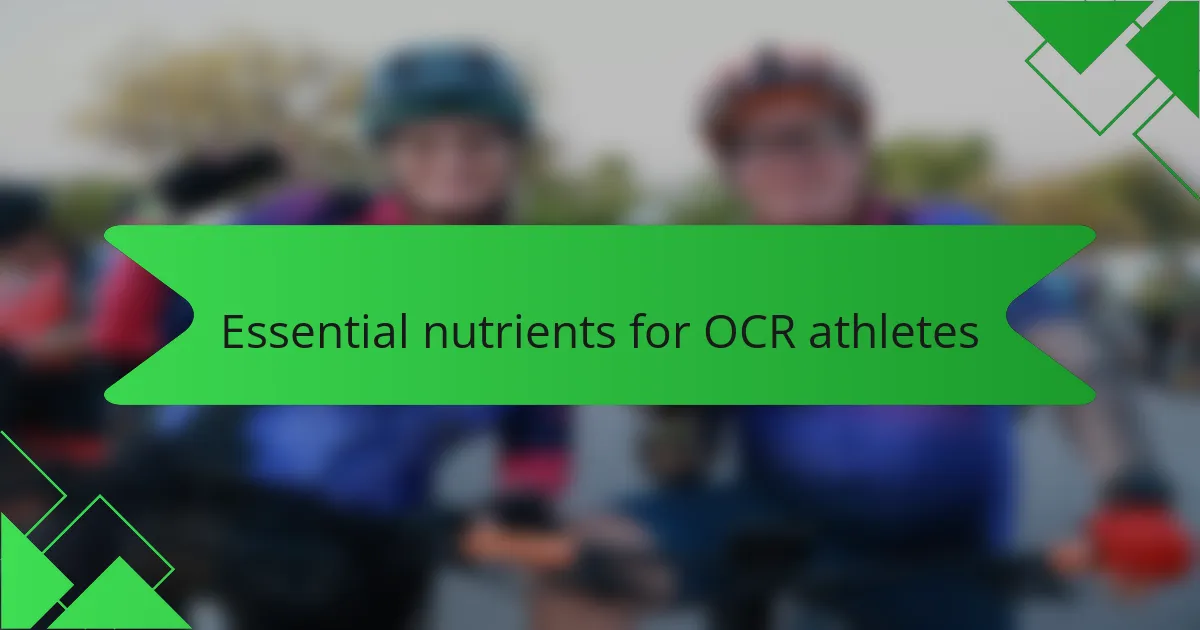
Essential nutrients for OCR athletes
Carbohydrates quickly became my go-to nutrient—the way they fuel my muscles during those grueling, muddy miles is unmatched. Have you ever hit a wall halfway through a race? That’s usually a sign I didn’t load up enough carbs beforehand. It’s like my body simply runs out of the gas it needs to keep going.
Then there’s protein, which I didn’t pay enough attention to at the start. After smashing through obstacles and pushing my limits, my muscles begged for repair. I remember feeling stiff and sore until I made protein a priority in my meals, and that recovery boost made all the difference in my training consistency.
Fats might get overlooked, but I’ve found they’re my secret weapon for steady, long-lasting energy. Unlike carbs that burn fast, fats sustain me through those tough sections that demand both strength and focus. Balancing these nutrients wasn’t easy, but once I understood their roles, my performance skyrocketed.
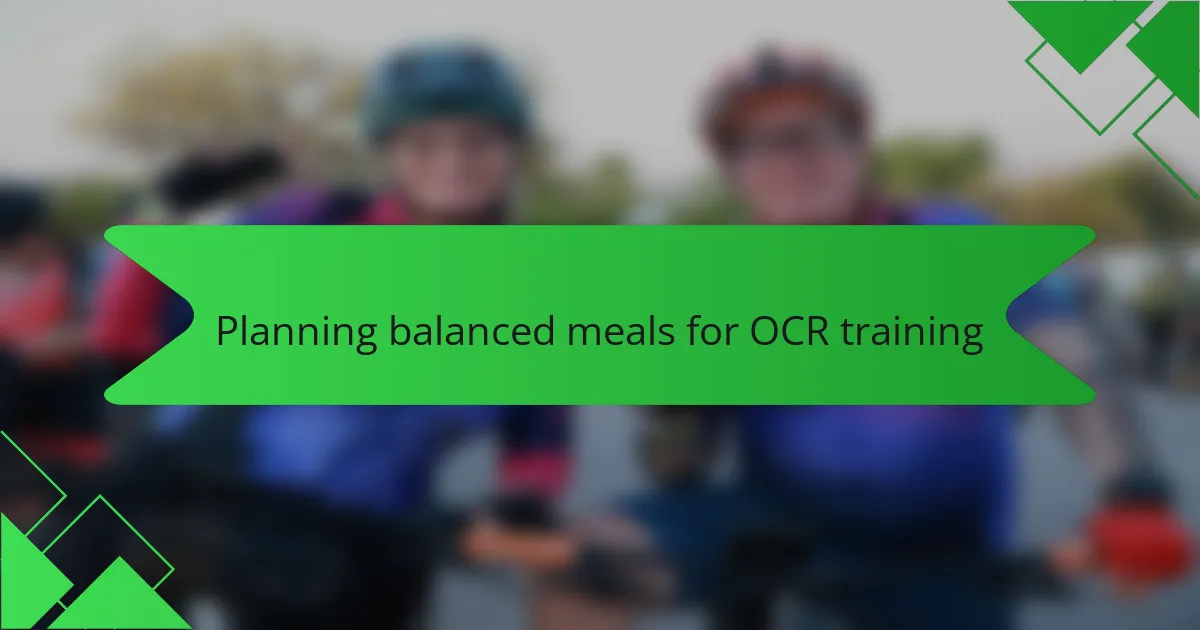
Planning balanced meals for OCR training
When I first started planning balanced meals for OCR training, I quickly realized that a one-size-fits-all approach simply wouldn’t work. I needed meals that provided enough energy without leaving me feeling sluggish during those intense workouts. It took some trial and error, but focusing on the right balance of macronutrients made a world of difference in my stamina and recovery.
I found that structuring my meals around these key elements was essential:
- Complex carbohydrates like sweet potatoes and brown rice for sustained energy
- Lean proteins such as chicken, fish, and legumes to repair muscles
- Healthy fats from sources like avocados and nuts for long-lasting fuel
- Hydrating foods including fruits and vegetables to maintain electrolyte balance
- Timing meals to eat about 2-3 hours before training to avoid discomfort
By paying close attention to these parts, my body felt more resilient, and I could tackle the course with greater confidence. Have you ever experienced that sluggish feeling halfway through a workout? Adjusting my meal components helped me avoid that completely.
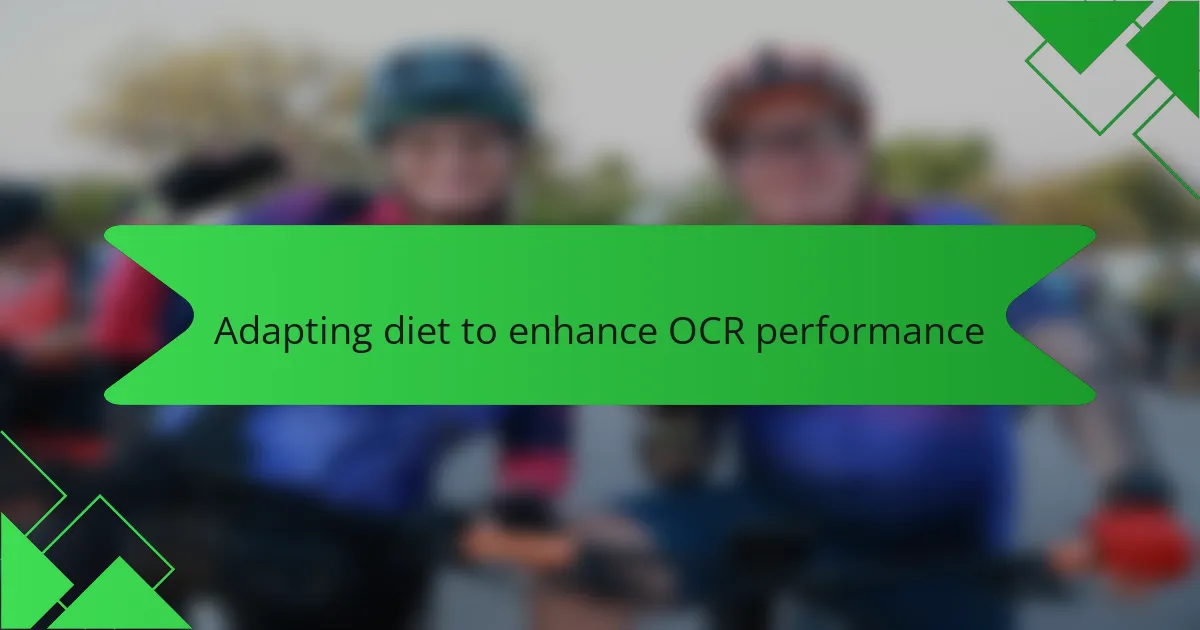
Adapting diet to enhance OCR performance
Adapting diet to enhance OCR performance meant more than just eating clean—it required me to rethink how and when I fueled my body for the unique demands of obstacle course racing. I discovered that timing my meals around training sessions boosted my energy levels noticeably, making those grueling climbs and carries feel less daunting.
One of the biggest shifts was prioritizing a balance between carbohydrates, proteins, and fats to sustain endurance without feeling weighed down. Here’s a snapshot of what worked best for me:
- Consuming complex carbs like sweet potatoes and brown rice a few hours before training to ensure lasting energy
- Incorporating lean proteins such as chicken and legumes to support muscle recovery after tough workouts
- Adding healthy fats from sources like avocados and nuts to maintain satiety and aid joint health
- Staying hydrated with electrolyte-rich drinks, especially in warmer weather or longer races
- Snacking on nutrient-dense options like berries and Greek yogurt to keep blood sugar stable without crashes
These tweaks made a real difference in my OCR performance, helping me feel stronger and more resilient on race day.

Hydration strategies for obstacle racing
Hydration became a game-changer for me once I realized that water alone wasn’t enough during those sweaty, obstacle-filled races. Have you ever felt your muscles cramp just when you thought you were unstoppable? That’s often dehydration sneaking in, and that’s when I started relying on electrolyte-rich drinks to keep my body balanced and muscles firing right.
I learned to sip consistently throughout the course instead of chugging only at water stations. Small, regular sips kept me from feeling bloated or sluggish, which was especially important when the heat was intense and the obstacles demanded constant effort. Plus, carrying a lightweight hydration pack made a surprising difference in staying prepared without interrupting my rhythm.
Sometimes, I even adjusted my hydration strategy based on the race length and conditions—longer courses meant more electrolytes, while shorter or cooler races saw me focusing just on water and light snacks. Experimenting with these tweaks felt like fine-tuning a personal system, and when I got it right, I could push harder and stay sharper from start to finish.

Personal dietary adjustments for OCR success
When I first started training for obstacle course racing, I noticed that my usual diet left me feeling sluggish and fatigued halfway through runs. Adjusting my meals to include more complex carbohydrates and lean proteins gave me sustained energy, which was a game changer during long training sessions. I also learned to prioritize hydration, especially with electrolytes, to keep cramps at bay.
Over time, these tweaks made me feel stronger and more resilient, especially during those tough, muddy courses where every bit of energy counts. Here’s what worked best for me:
- Increased intake of whole grains like quinoa and brown rice for lasting energy
- Added lean proteins such as chicken, turkey, and plant-based options to support muscle recovery
- Incorporated plenty of fresh vegetables for vitamins and antioxidants
- Focused on balanced meals to avoid energy spikes and crashes
- Stayed consistent with water and included electrolyte drinks during intense workouts
- Limited processed foods and sugars that drained my energy faster
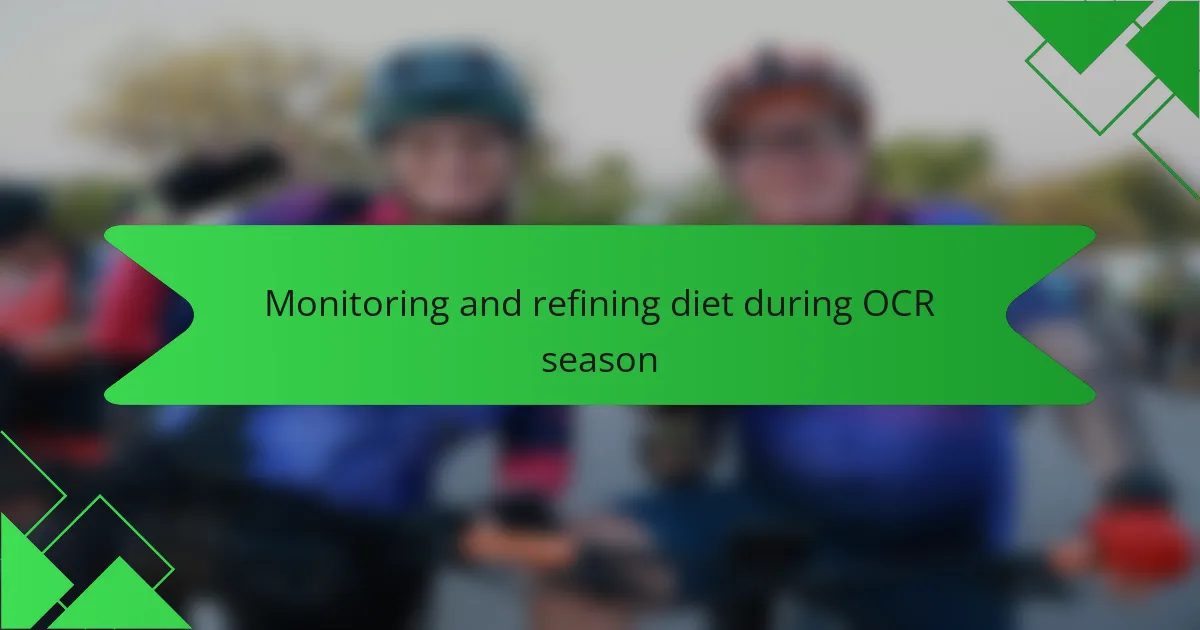
Monitoring and refining diet during OCR season
Throughout the OCR season, I learned that monitoring how my body responded to different foods was crucial. After a few early races where I felt sluggish, I started keeping a simple food diary, noting what I ate and how my energy levels held up during training and events.
Refining my diet became an ongoing process rather than a one-time adjustment. I experimented with timing meals and snacks to find the sweet spot where I felt fueled but not heavy. Here’s what helped me stay on track:
- Track meals and snacks alongside training intensity to identify what boosts or drains energy
- Adjust carb and protein intake based on race demands and recovery needs
- Stay hydrated consistently, not just on race day
- Include anti-inflammatory foods like berries and nuts to aid muscle recovery
- Be flexible and willing to tweak portions or ingredients as the season progresses
